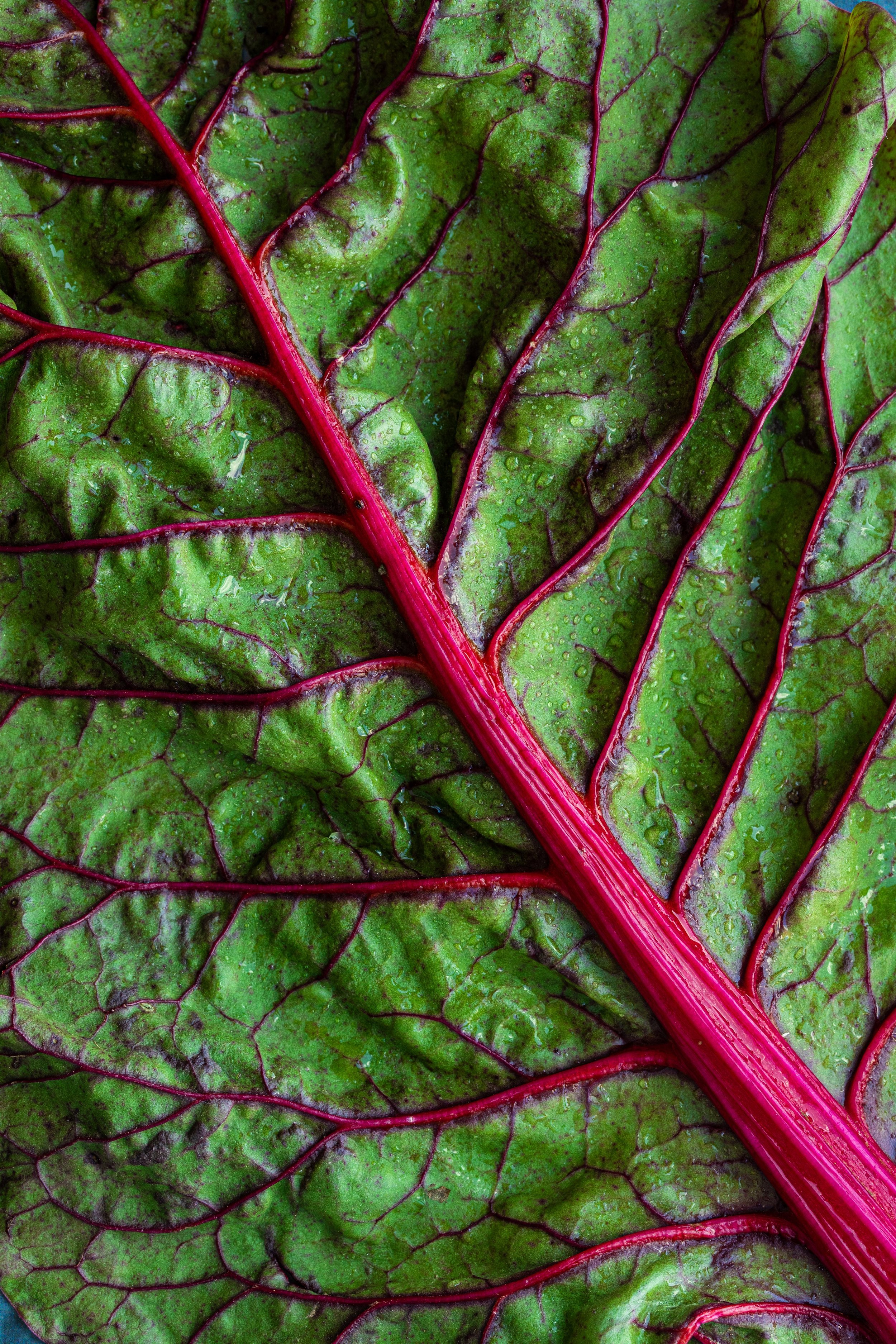 Image 1 of 2
Image 1 of 2

 Image 2 of 2
Image 2 of 2

Chard (Swiss red chard)
Swiss chard is actually native to the Mediterranean and is a member of the leafy green family that can be eaten raw or cooked. There are many types of Swiss chard, some of which have colourful, jewel-toned stalks and rainbow tones.
Swiss chard’s many antioxidants include polyphenols, vitamin C, vitamin E, and carotenoid plant pigments such as beta carotene. These nutrients help protect cells from free radical damage. Chard also contains 3 times the recommended daily intake of vitamin K and 44 % of the recommended amount of vitamin A. This vegetable can help reduce blood pressure and enhance performance in sports.
June to August and from October to April
Swiss chard is actually native to the Mediterranean and is a member of the leafy green family that can be eaten raw or cooked. There are many types of Swiss chard, some of which have colourful, jewel-toned stalks and rainbow tones.
Swiss chard’s many antioxidants include polyphenols, vitamin C, vitamin E, and carotenoid plant pigments such as beta carotene. These nutrients help protect cells from free radical damage. Chard also contains 3 times the recommended daily intake of vitamin K and 44 % of the recommended amount of vitamin A. This vegetable can help reduce blood pressure and enhance performance in sports.
June to August and from October to April
Swiss chard is actually native to the Mediterranean and is a member of the leafy green family that can be eaten raw or cooked. There are many types of Swiss chard, some of which have colourful, jewel-toned stalks and rainbow tones.
Swiss chard’s many antioxidants include polyphenols, vitamin C, vitamin E, and carotenoid plant pigments such as beta carotene. These nutrients help protect cells from free radical damage. Chard also contains 3 times the recommended daily intake of vitamin K and 44 % of the recommended amount of vitamin A. This vegetable can help reduce blood pressure and enhance performance in sports.
June to August and from October to April
